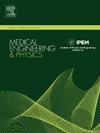DP-CLAM: A weakly supervised benign-malignant classification study based on dual-angle scanning ultrasound images of thyroid nodules
IF 1.7
4区 医学
Q3 ENGINEERING, BIOMEDICAL
引用次数: 0
Abstract
In this paper, a two-stage task weakly supervised learning algorithm is proposed. It accurately achieved patient-level classification task of benign and malignant thyroid nodules based on ultrasound images from two scanning angles: long axis and short axis of the thyroid site. In the first stage, 68,208 ultrasound scanning images of 588 patients are used to train the underlying classification model. In the second stage, feature vectors of ultrasound images with dual scan angles are extracted using the classification model in the first stage. Then the feature vectors are assigned to position sequences in the order of visual reception by the physician. Finally, the location decision is made through a weakly supervised learning approach. Combined with the dual-angle difference information carried in the overall features, our method accurately achieved benign and malignant classification of thyroid nodules at the patient level. An accuracy of 93.81 % for benign and malignant classification of patients was obtained in our test set. The accuracy of benign and malignant classification of patients with thyroid nodules is improved by our weakly supervised learning method based on a two-stage classification task. It also reduced the pressure of imaging physicians in diagnosing a large number of images. In the clinical auxiliary diagnosis, it provides an effective reference for the timely determination of thyroid nodule patients.
DP-CLAM:基于甲状腺结节双角度超声扫描图像的弱监督良恶性分类研究
提出了一种两阶段任务弱监督学习算法。基于甲状腺部位长轴和短轴两个扫描角度的超声图像,准确地完成了甲状腺良恶性结节的患者级分类任务。第一阶段使用588例患者的68208张超声扫描图像训练底层分类模型。第二阶段,利用第一阶段的分类模型提取双扫描角度超声图像的特征向量。然后将特征向量按照医生视觉接收的顺序分配到位置序列。最后,通过弱监督学习方法进行定位决策。结合整体特征所携带的双角度差信息,我们的方法在患者水平上准确地实现了甲状腺结节的良恶性分类。在我们的测试集中,对患者的良性和恶性分类的准确率为93.81%。基于两阶段分类任务的弱监督学习方法提高了甲状腺结节良恶性分类的准确性。它还减少了成像医生在诊断大量图像时的压力。在临床辅助诊断中,为甲状腺结节患者的及时判断提供了有效参考。
本文章由计算机程序翻译,如有差异,请以英文原文为准。
求助全文
约1分钟内获得全文
求助全文
来源期刊

Medical Engineering & Physics
工程技术-工程:生物医学
CiteScore
4.30
自引率
4.50%
发文量
172
审稿时长
3.0 months
期刊介绍:
Medical Engineering & Physics provides a forum for the publication of the latest developments in biomedical engineering, and reflects the essential multidisciplinary nature of the subject. The journal publishes in-depth critical reviews, scientific papers and technical notes. Our focus encompasses the application of the basic principles of physics and engineering to the development of medical devices and technology, with the ultimate aim of producing improvements in the quality of health care.Topics covered include biomechanics, biomaterials, mechanobiology, rehabilitation engineering, biomedical signal processing and medical device development. Medical Engineering & Physics aims to keep both engineers and clinicians abreast of the latest applications of technology to health care.
 求助内容:
求助内容: 应助结果提醒方式:
应助结果提醒方式:


